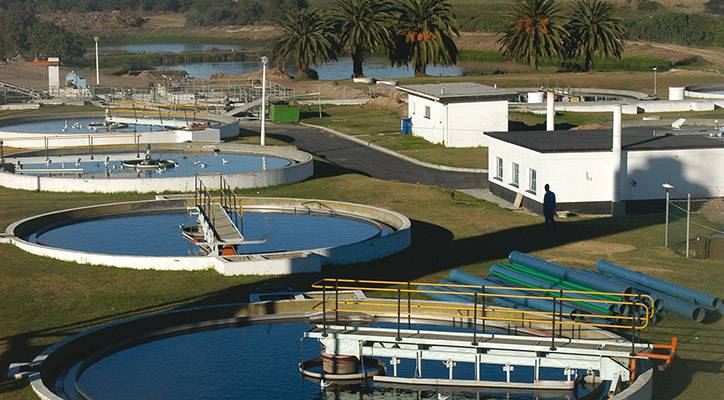Municipal Drinking Water Treatment: Access to safe drinking water is considered to be a basic human right. However, more than one-sixth of the world’s population, predominantly in developing countries, lack reliable access to such water. Customers complain to drinking water companies regarding incidents like taste, odour, colour, slime, low pressure and no supply of water. In the UK, it is estimated that one-third of all customer complaints concerning drinking water are related to water discolouration (Cook et al., 2005). These complaints greatly undermine customers’ confidence in water companies.
Iron and Manganese contamination of water have long been considered to only lead to aesthetic problems, in that they are secondary contaminants that have little or no adverse health effects. However, research conducted by Wasserman et al. (2006) indicated a relationship between increased Mn concentrations in drinking water and reduced intellectual functions of children. Increased levels of Iron and Manganese concentrations have been found to be the main cause of drinking water discolouration (Slaats, 2002). Furthermore, discoloured water could also lead to coloured stains on laundries and sinks, increased treatment costs, reduced treatment capacity and increased pumping costs. Water with high concentrations of Iron and Manganese has been found to give water an unpleasant metallic taste and vegetables cooked with it become dark and look unappetizing (Herman, 1996).
High Iron and Manganese levels can lead to non-compliance with drinking water regulations. The drinking water standard for most jurisdictions for iron is 0.3 milligrams per liter (mg/l), and the standard for manganese is 0.05 mg/l respectively. The quality of water changes as it travels from source to consumers in Water Distribution Networks (‘WDNs’). Although water companies generally set post-treatment targets of Fe and Mn to about 3% of their respective MCLs, low concentrations of Fe and Mn still enter the network and gradually accumulate on pipe walls within WDNs. Given the wrong conditions, such as high flows created by a water main burst or high diurnal consumption of drinking water, these accumulated particles may subsequently lead to water discolouration and end up in customers’ taps.
In order to begin the process of oxidation of the iron (and manganese) in solution DMI-65® is designed to operate in the presence of chlorine or other oxidants. In this process the oxidant removes electrons and is consumed in
the process. The operator needs to ensure that there is a 0.1 – 0.3 ppm free chlorine residual in the effluent water. Chlorine, fed as sodium hypochlorite or bleach (12.5% NaOCl), is the preferred oxidant since it is relatively inexpensive, readily available around the world and it is effective. It also performs the vast majority of any disinfectant process.
Unlike ion exchange resins where higher regenerant dosages will increase the ion exchange capacity, NaOCl residuals or concentrations higher than required to oxidize the Iron and Manganese do not increase the oxidative properties of the media. Additionally, since the media is often used to pretreat waters prior to an RO system a higher free chlorine residual would require more extensive post treatment to reduce the residual and protect the membranes from chlorine attack.
DMI-65® has been certified to the US Standard of NSF/ANSI 61 for Drinking Water System Components and for use in England and Wales Under Regulation 31(4)(a) of the water supply (Water Quality) regulations 2010 and has also been tested by many other water treatment authorities and laboratories.
George Municipal Water Works, South Africa, uses over 550 metric tonnes of DMI-65®. George water is highly coloured containing Humic and Fulvic acids – the raw water colour is approx. 800 PtCo colour units. This type of water is believed to be one of the most difficult to filter. Iron removal is very effective regardless of the pH. The highest residual iron found was 0.01 mg/L. Manganese removal is also very efficient. The highest remaining manganese found was 0.06 mg/l Mn is best removed at higher pH 8. The additional benefit of aluminium removal even at the higher pH. The highest turbidity recorded was 0.06 NTU. According to our laboratory tests the highest colour was 4 mg/l PtCo but most of the time the colour was lower than the colour of the distilled water bought from a pharmacy in George. The plant has been running since the beginning of January 2007 and continues to have excellent results. George Municipal Water Works, uses the same DMI-65® filter media for over 13 years, without failure or decrease in performance.
The Witbank Municipal Water Treatment Plant in Durban, South Africa consists of 18 large rapid sand filters utilizing 1200 tonnes of filter media to remove iron and manganese from the local ground water source. Local water treatment specialists and DMI-65® agent, Water Technologies Cape, demonstrated the performance and cost benefits of upgrading the system to DMI-65®, by successful pilot trial in 2018. Upgrades to the plant commenced in 2019 and expected to be completed by the end of 2020.













